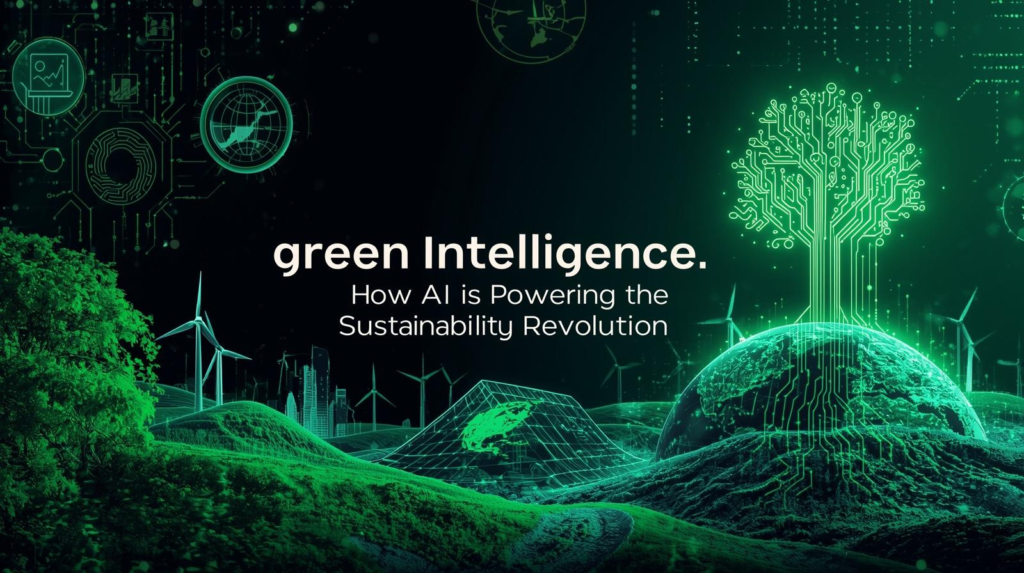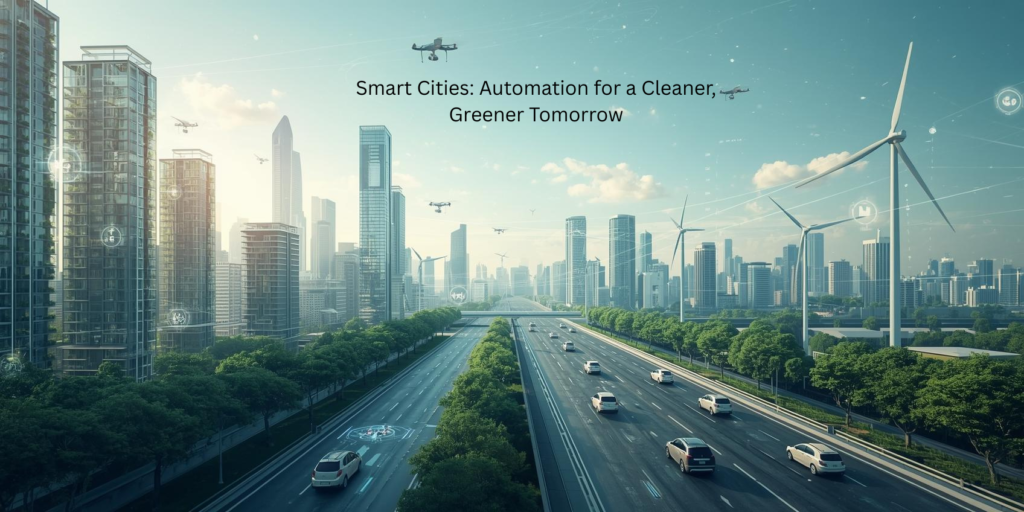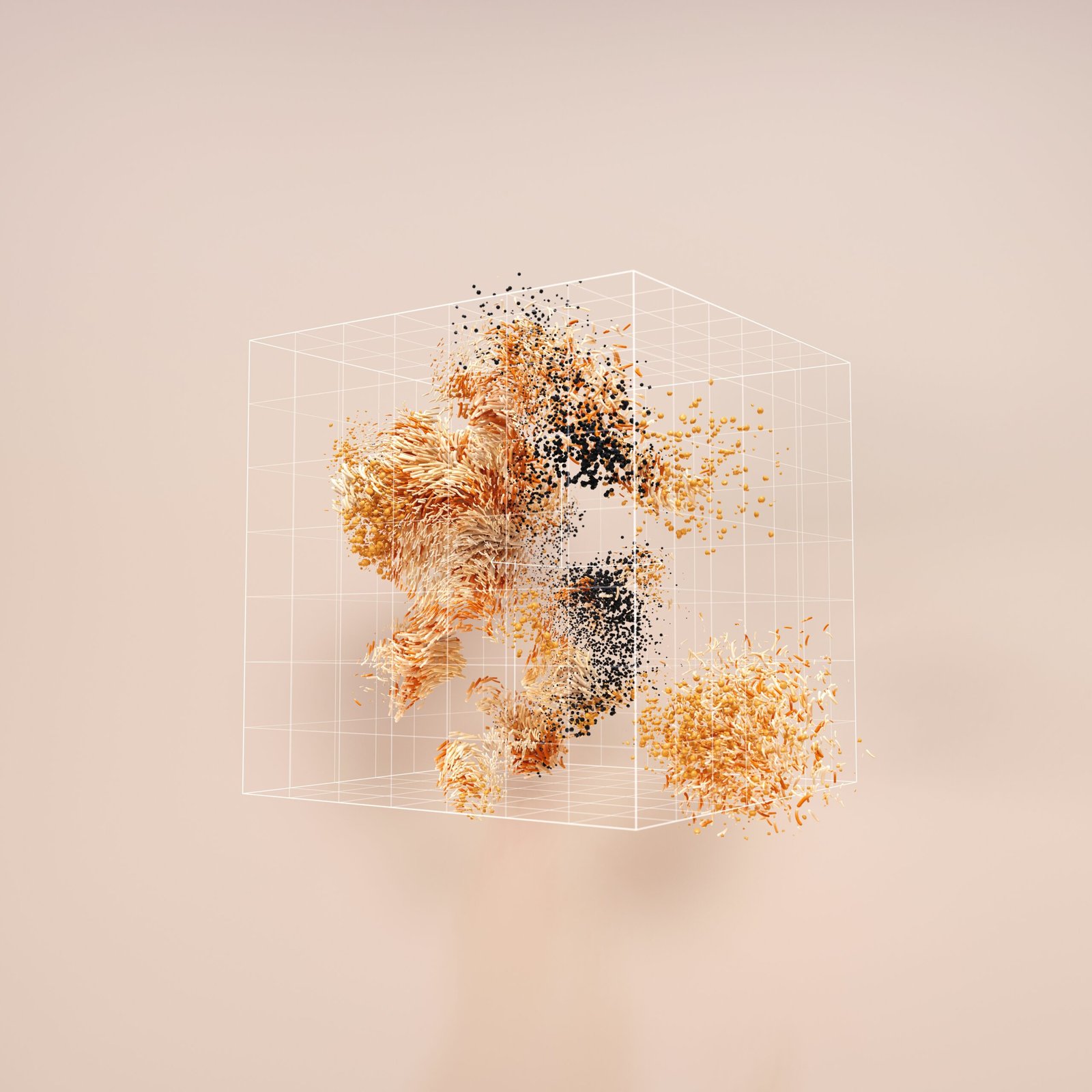
Introduction: When Algorithms Meet Earth’s Survival
What if saving the planet isn’t just in our hands — but in the algorithms we train?
In an age where climate change has shifted from prediction to reality, the urgency for sustainable transformation has never been greater. Rising temperatures, resource depletion, and environmental degradation demand not just human action but green Intelligence systems capable of optimizing every watt, drop, and byte. Enter AI in sustainability — the silent force driving a new kind of revolution, one that blends digital precision with environmental compassion. At AixCircle, we believe that artificial intelligence is not just a technological breakthrough — it’s a planetary one. From predicting extreme weather to powering renewable grids, AI is redefining how humanity approaches conservation. This is the dawn of Green Intelligence innovations, where machine learning meets Mother Nature — and the results are both astonishing and hopeful.
Smart Energy: AI in Solar, Wind, and Hydro Optimization
Energy is the heartbeat of civilization, and AI is making that heartbeat greener, smarter, and more efficient. Traditional renewable systems, while eco-friendly, often struggle with intermittency — the sun doesn’t always shine, and the wind doesn’t always blow. That’s where sustainable AI solutions come in, using predictive analytics, automation, and optimization algorithms to make energy production reliable and scalable.
AI-powered systems are already transforming solar and wind energy plants across the globe. Machine learning models forecast sunlight intensity, predict wind speeds, and automatically adjust turbine angles to capture maximum energy output. For instance, Google’s DeepMind collaborated with wind farms in the U.S. to predict power output 36 hours in advance, boosting energy value by 20%. Similar systems now regulate hydroelectric dams, balancing water levels with energy demands — minimizing waste while maximizing impact.
This synergy between nature and technology represents the purest form of eco-friendly artificial intelligence, where data doesn’t just serve profit — it sustains the planet. As AixCircle envisions, the future power grid won’t just be renewable; it’ll be intelligent, adaptive, and self-learning.
Predictive Climate Models: The Algorithm That Sees Tomorrow
Imagine being able to forecast hurricanes, droughts, or floods with unprecedented accuracy — not months, but years in advance. That’s the promise of AI for climate change mitigation. Artificial intelligence, armed with satellite imagery, ocean temperature readings, and atmospheric data, can detect patterns invisible to the human eye. These models don’t just predict disasters; they prepare humanity to act faster and smarter.
The European Space Agency, for example, uses AI to analyze satellite data for early signs of deforestation, illegal mining, and glacial melt. Meanwhile, IBM’s “Green Horizon” project in China uses deep learning to predict air pollution levels 72 hours ahead, helping cities take preventive measures before a crisis unfolds.
What’s revolutionary about these systems is their green intelligence — the ability to learn from each environmental event and improve over time. Unlike traditional models that rely on static equations, AI-based systems continuously evolve, allowing more dynamic, localized climate insights.
At AixCircle, we see AI in sustainability as a guardian of the future — one that empowers policymakers, corporations, and citizens with the foresight needed to protect our only home.
Smart Cities: Automation for a Cleaner, Greener Tomorrow

The future of sustainability isn’t in rural fields or remote labs — it’s in cities. Urban areas produce over 70% of global carbon emissions, making them both the problem and the potential solution. AI in sustainability plays a crucial role in transforming cities into smart ecosystems that breathe efficiency.
Picture this: traffic lights that adjust in real-time to reduce idle emissions; garbage trucks that only visit bins when sensors signal they’re full; buildings that regulate their own energy consumption based on occupancy and weather data. This isn’t science fiction — it’s happening now.
Barcelona, Singapore, and Amsterdam are pioneers in using sustainable AI solutions to cut down waste and emissions. AI-driven water systems detect leaks instantly, saving millions of gallons annually. In India, cities like Pune are exploring data-based waste segregation programs that use image recognition to automate recycling processes.
These green Intelligence innovations not only save resources but also improve quality of life. Clean air, efficient transport, and reduced energy bills are no longer distant dreams — they’re the byproducts of smarter decision-making powered by artificial intelligence.
At AixCircle, we envision eco-friendly artificial intelligence becoming the invisible engine behind urban transformation — helping cities think, act, and grow sustainably.
Agriculture and Conservation: Nature’s New Partner
While industries and cities are embracing AI, the earth itself is benefitting too. Agriculture, the backbone of human civilization, is now being redefined by AI in sustainability. Machine learning models help farmers monitor soil health, predict rainfall, and optimize irrigation. Drones equipped with AI sensors scan fields for pest infestations, allowing early intervention and minimizing chemical usage.
But AI’s contribution to sustainability doesn’t end at farms. It extends deep into forests and oceans. Conservationists use eco-friendly artificial intelligence to track endangered species through camera traps and satellite feeds. The World Wildlife Fund employs AI algorithms to detect poaching patterns, ensuring faster response times and saving countless animal lives.
These real-world applications show that sustainability isn’t a separate sector — it’s a mindset powered by intelligence. Every pixel of satellite data analyzed, every algorithm trained on crop yield, and every model predicting carbon absorption contributes to a larger mission: harmony between innovation and environment.
AI for Climate Change: The Data-Driven Shield of the Planet
When we talk about AI for climate change, we’re talking about turning raw environmental data into actionable global defense. With trillions of data points collected daily from satellites, sensors, and IoT devices, the challenge lies not in gathering information, but in interpreting it meaningfully. AI bridges that gap.
From tracking greenhouse gas concentrations to calculating urban heat islands, artificial intelligence turns chaos into clarity. NASA uses AI to study climate feedback loops — how rising temperatures affect ice melt, and in turn, how that melt accelerates further warming. Similarly, companies like Microsoft and Amazon are investing heavily in sustainable AI solutions to achieve their own carbon neutrality goals through intelligent carbon accounting.
The fusion of environmental science and AI is unlocking insights that humans alone could never compute. It’s not just about automation — it’s about augmentation. By processing planetary-scale data, AI acts as Earth’s most powerful advocate.
The Business Case for Green Intelligence
While the moral argument for sustainability is clear, businesses are discovering that AI in sustainability also makes economic sense. Smarter resource management means lower operational costs, reduced waste, and improved brand value. Global corporations like Siemens, Unilever, and Tesla are deploying green technology innovations to align profitability with purpose.
In logistics, AI-driven route optimization cuts fuel consumption by up to 25%. In manufacturing, predictive maintenance reduces energy waste. Even in the financial world, AI models are assessing the sustainability risk of investments, pushing companies toward eco-conscious decisions.
At AixCircle, we believe sustainability is no longer a choice — it’s a competitive advantage. Companies that leverage eco-friendly artificial intelligence will lead the next industrial wave — one defined not by output, but by impact.
The Road Ahead: AI’s Role in Achieving Net Zero
The world’s collective goal — Net Zero by 2050 — requires more than promises; it needs precision, scalability, and continuous adaptation. And that’s exactly what AI in sustainability offers. By simulating environmental outcomes and optimizing carbon offset strategies, AI enables organizations to move from intent to impact.
For example, carbon tracking platforms powered by machine learning now calculate emissions at granular levels — from factory operations to individual supply chains. These sustainable AI solutions make carbon accounting transparent and traceable. On a global scale, governments are using AI-driven modeling to set realistic emission targets and measure progress in real time.
Yet, challenges remain. Ethical considerations about energy use in AI training, data privacy, and equitable access must be addressed to ensure that AI’s growth doesn’t contradict its green purpose. This is where the vision of eco-friendly artificial intelligence becomes vital — designing systems that are sustainable not just in output but also in operation.
The next frontier of sustainability will not just be renewable — it will be regenerative, where algorithms not only reduce harm but actively repair ecosystems.
Conclusion: Intelligence for a Living Planet
In the battle against climate change, artificial intelligence is proving to be humanity’s greatest ally — an ally that doesn’t sleep, doesn’t tire, and learns continuously. But as powerful as it is, AI remains a reflection of our intent. Its impact depends entirely on how we choose to use it.
At AixCircle, we envision a world where technology and ecology coexist in perfect balance. Where the algorithms that once powered industries now power sustainability. Where green intelligencey innovations are not futuristic dreams but everyday tools. Where AI for climate change becomes the moral compass of progress.
As we move forward, one truth stands firm — intelligence, when guided by empathy, can heal the world. The sustainability revolution isn’t coming; it’s already here. And it’s powered by the smartest force on Earth — the union of human purpose and artificial intelligence.

